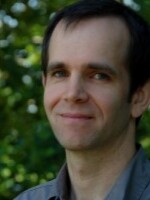A new study conducted in Portland neighborhoods confirms that the more traffic there is on a street, the more air pollution cyclists are breathing.
A number of studies have measured air quality along bike routes, but Alex Bigazzi wanted to see how much pollution got into cyclists’ lungs.
Bigazzi did the study as a graduate student at Portland State University. The study he had in mind hadn't been done before, and he was concerned as a researcher about the methodology he was attempting. He planned to check cyclists' breath for pollutants before and after a ride and compare that with what's in the breath of other cyclists taking other routes.
"We really didn't know when we set off, whether it was going to work, which made me a little nervous because this was my dissertation topic," he said.
Turns out, Bigazzi's process worked but produced results that might make the cyclist in him nervous.
“We found that for the largest exposure differences — the most polluted routes and the least polluted routes — we did see significant differences in blood concentrations at the end of the ride,” Bigazzi said.
The study looked at volatile organic compounds, carbon-based chemicals that come from many sources, including car exhaust. It found a 40 to 100 percent increase in pollutants entering the cyclists' bloodstreams, based on breath samples from various cyclists.
Bigazzi studied Portland roads that had different traffic loads but were close to each other, such as Southeast Division and Clinton streets.
The differences in breath samples are only about half as large as the ambient air differences. The heavy traffic areas contain 100 to 200 percent higher densities of air pollution.
Bigazzi co-authored the study with Miguel A. Figliozzi, Wentai Luo and James F. Pankow at Portland State.
Bigazzi is now teaching in another bike-friendly city. He's an assistant professor at the University of British Columbia in the Department of Civil Engineering and School of Community and Regional Planning.
He said his findings show the benefits of riding on routes with less traffic. But Bigazzi said getting cyclists to shift to other routes is like changing drivers' behavior — factors like distance and safety, can be every bit as important, as how much pollution is in the air. That's actually the topic of another study Bigazzi worked on, with two of his former colleagues at Portland State.
Copyright 2020 EarthFix. To see more, visit .



